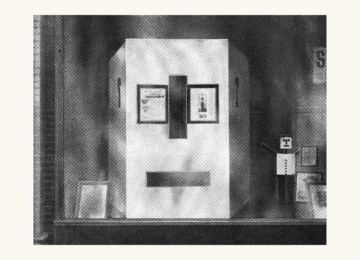D. Graham Burnett at Asterisk:
Our eyes are worth money. We know that, now. It has become a commonplace that our “attention economy” is functionally an eyeball economy. But how did eyeballs come to look like dollar signs? Let’s dig into what we might think of as the original Faustian Bargain by which the sciences of human perception (with their sophisticated technologies of precision monitoring and measurement) cut a deal with those who move the money around. And I propose that we start here:

This puzzling totem face (with its adjacent mini-me) greeted pedestrians on 125th street in Harlem back in the summer of 1925. The curious who meandered over to the shop window for a closer look were, quite without their knowledge, lab rats in an elaborate experiment being conducted by one Howard K. Nixon, a recent Ph.D. in psychology at Columbia University and a pioneer in the new field of “attention science” — specifically as it could be applied to the business of advertising.
More here.
